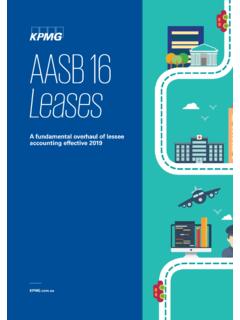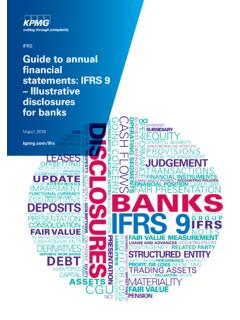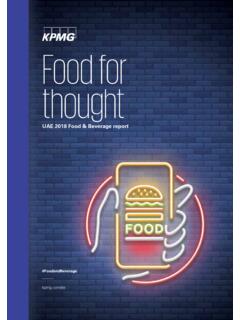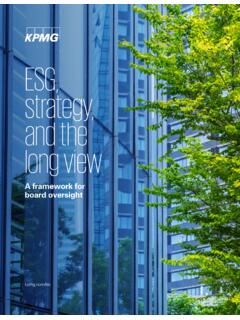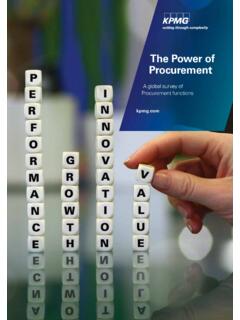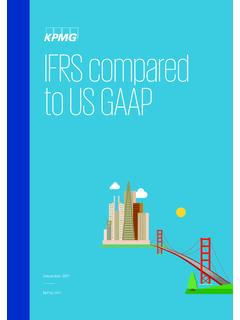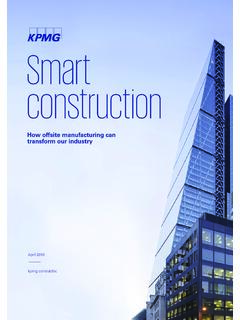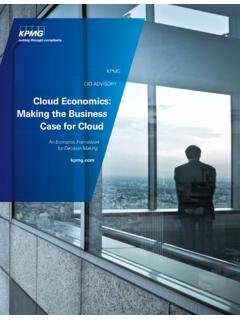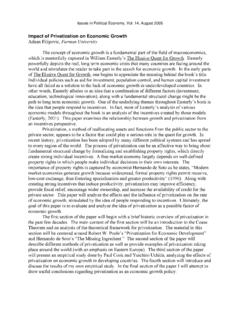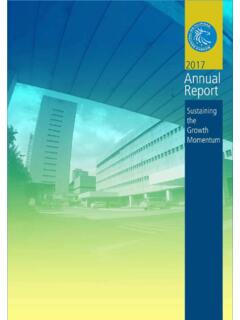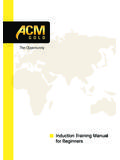Transcription of Customer-led transformation in retail banking - assets.kpmg
1 , 2018 retail banks can create superior customer experiences by balancing the priorities of the 5 CsCustomer-led transformation in retail bankingKnowing they needed to boost the bottom line during the recent rebuilding phase of the industry, bankers like electricity chose the path of least resistance: they launched traditional cost-cutting programs to plump up the bottom useful in the short term, cost cutting is not a sustainable strategy for longer-term growth. Who can cut their way to prosperity?In our view, building the top and bottom lines will rely on banks creating much better customer experiences powered by new technologies, coupled with a holistic digital transformation of the bank s business model that links new processes with bold new strategic initiatives. We believe banks can achieve these goals by a relentless focus on the 5Cs: An unyielding attention on Customers and their experiences Cost optimization that is targeted and strategic The creation of an organization-wide Culture that embraces change Consistent concentration on Compliance The pursuit of new Capabilities around digital transformationWe offer this paper in the spirit of debate, knowing some who read it will question some of our observations and points of view.
2 We encourage and invite discussion, we look forward to a spirited give-and-take, and we hope you take the time to reach out to us about the to our readersMeet the AuthorsJim McAveeneyPrincipalKPMG Financial ServicesT: 630-639-9728 E: SzczepanekDirectorKPMG Financial Services T: 630-835-6214 E: BerryDirectorKPMG Financial ServicesT: 704-370-4359 E: 2018 KPMG LLP, a Delaware limited liability partnership and the member firm of the KPMG network of independent member firms affiliated with KPMG International Cooperative ( KPMG International ), a Swiss entity. All rights reserved. The KPMG name and logo are registered trademarks or trademarks of KPMG International. NDPPS 776178 vFigure 1: KPMG s 5Cs FrameworkThe 5 CsImprove customer experienceReduce costIncrease capabilities within the businessCreate lasting cultural changeIncrease robustness of business complianceSimplification of processes will contri- bute to operational efficiency and provide mistake proofing/ reduced errorsEstablishing a quality culture through consistency, measures, and ways of working to sustain benefits deliveryCapabilities to be aligned to role, tracked, and in support of a quality mind-set and cultureImproved business controls and regulatory compliance with clarity of measures and procedures throughout the organizationBankers must place the customer at the center of everything they transformation in retail banking 2018 KPMG LLP, a Delaware limited liability partnership and the member firm of the KPMG network of independent member firms affiliated with KPMG International Cooperative ( KPMG International ), a Swiss entity.
3 All rights reserved. The KPMG name and logo are registered trademarks or trademarks of KPMG International. NDPPS 77617828%25%Competing priorities for executivesCEOs clearly already have customers in mind, judging from their responses in KPMG s 2017 CEO Outlook Survey, where banking CEO s ranked (seen in Figure 2) their top five strategic priorities over the next three are challenged with balancing competing initiatives, but at the core of almost every priority on this list is the consumer. Whether it s an attempt to attract new customers, retain and deepen customer relationships, or build customer trust, all of these initiatives are client focusImplementing disruptive technologiesTalent developmentFigure 2: Top five strategic priorities for banking CEOsStronger branding, marketing communicationsBuilding public trust28%25%22%Source: KPMG s CEO Outlook Survey 2017 2018 KPMG LLP, a Delaware limited liability partnership and the member firm of the KPMG network of independent member firms affiliated with KPMG International Cooperative ( KPMG International ), a Swiss entity.
4 All rights reserved. The KPMG name and logo are registered trademarks or trademarks of KPMG International. NDPPS 776178 Shifting the optimization focusWhen, in the past, most retail banks followed the conventional model of creating cost-cutting targets, they began typically by assessing how to improve process efficiencies. Such programs typically put controls in place to sustain the cost and create efficiency gains. While those programs may have achieved short-term impacts, banks often failed to position their organizations for a shift away from legacy banking toward long-term development. In our view, when retail banks manage their profit-and-loss centers by product (deposits, credit cards, loans, etc.), the digital- and customer-focused offerings supporting those products tend to stay siloed. That approach often results in an inconsistent experience for customers across products and channels of interaction. Thus, this traditional product-centric approach fails to consider the impact to the customer and their experience.
5 In contrast, we view a customer-centric transformation as a strategic refocusing of the bank on the customer experience. The result, we suggest, allows a bank to become much more agile, provide the ability to mine vast and disparate sets of data, and analyze them using artificial intelligence (AI) and machine learning techniques. Beyond enhancing the chances for efficiently capturing significant cost savings, building a digital foundation positions the organization to shift away from legacy banking . Banks must move away from the traditional slash-and-burn technique of cost cutting. Instead, they must adopt a more holistic focus on the end-to-end value chains from the customer perspective. Our experience in the industry indicates that, by taking a customer-centric approach in their digital transformation effort, retail banks are able to realize major cost savings, create a better customer experience, and focus on overall continuing to fix the customer service experience, banks can expand and offer rebundled services, while improving their bottom lines and staying competitive.
6 Mitch Siegel, KPMG National Financial Service Strategy and transformation LeaderSource: bank Customer Service as a Competitive Advantage, KPMG, Bloomberg media Group, 2018 Business Case ExampleKPMG supported a retail banking client to complete a Customer-led transformation that shifted the bank from a product-focused model to a customer journey-focused model utilizing the 5Cs. The bank s goals were to reduce their cost base by 30 percent while protecting or enhancing the customers experiences. The KPMG team helped the client identify capabilities that could be reused across multiple journeys to deliver maximum customer value through automation and digital capabilities. KPMG also reduced costs and increased customer satisfaction by maximizing straight-through processing and emphasizing automation through rules-based and case management approaches. Ultimately, KPMG delivered strong benefits across all of the 5Cs for the bank . Customer experience became consistent across channels and products Process efficiencies delivered a 30 percent cost reduction Employee capabilities were increased through a Lean program Culture improved with 80 percent higher scores in empowerment and satisfaction A refined, comprehensive compliance and control framework reduced the cost of poor quality3 Customer-led transformation in retail banking 2018 KPMG LLP, a Delaware limited liability partnership and the member firm of the KPMG network of independent member firms affiliated with KPMG International Cooperative ( KPMG International ), a Swiss entity.
7 All rights reserved. The KPMG name and logo are registered trademarks or trademarks of KPMG International. NDPPS 776178 The 5Cs for successIn working with global, national, and regional banks, KPMG has identified five critical areas retail banks have embraced that lead to outperformance in Customer-led transformations. While strategizing, banks must contemplate the prioritization of all of the 5Cs they d like to focus on and pursue, while keeping the customer at the center of their discussions, thus establishing balance across all areas and creating necessary 3: Description of the 5 CsImprove the customer experienceBanks must clean up their processes, improve engagement with their associates, and shift their operations towards enabling an omnichannel frictionless journey. Customers will respond positively with significant increases in satisfaction and engagement costs and increase capacityBanks who focus on end-to-end process improvements with their customers in mind see significant gains.
8 One global bank achieved 25 40% cost reductions across their associated-assisted channels while, at the same time, achieving 20 30% utilization improvements in its contact capabilitiesThe shift from legacy to digitally enabled processes is dramatically increasing the capabilities of the retail bank . Technology empowers customers to perform many transactions, like deposits and payments, on their own. Bankers and advisors who were once focused on transactions now have the capacity to focus on deepening existing relationships with customers and building new complianceBanks must define key metrics and management routines that ensure compliance monitoring. Strong controls must be in place to balance process efficiency and compliance. For instance, banks utilizing Robotic Process Automation (RPA) should create new control rooms to monitor the utilization and up-time of their software bots and confirm adequate controls for the new cultureCulture change is not a clich ; it is a fundamental element of any customer led transformation .
9 Too often change is not sustained as muscle memory sets in and associates revert to the old ways of doing things. 2018 KPMG LLP, a Delaware limited liability partnership and the member firm of the KPMG network of independent member firms affiliated with KPMG International Cooperative ( KPMG International ), a Swiss entity. All rights reserved. The KPMG name and logo are registered trademarks or trademarks of KPMG International. NDPPS 776178 CustomerA strategy that centers on the customer creates a solid foundation for growth in the banking industry of today and tomorrow. Much of the growth will build on customized services, although to accomplish that goal there must be a commitment from the top of the bank and throughout the organization to remove barriers to transformation that will be powered by digitally enabled solutions, such as behavioral analysis. By using data and analytics tools and process, retail banks can unearth valuable insights about how their customers behave, and then create the customized products and services customers are demanding.
10 Let s say a bank has a customer who only uses checking and savings. Logically, the banker follows up with an offer for another product, a credit card. This is a simple trigger-based offer using rudimentary data current customer and contact information. But banks have far more detailed information and must invest time and resources to analyze how to best serve their customers using that data. In a better data-driven scenario, a bank customer buys furniture to outfit a nursery using a debit card, and with the basic information about that purchase, the bank follows up with the customer and provides a tailored offer on its college savings plans. To make it even better, the bank uses its digital channels to make the offer and provides special deals customized for that particular customer. These tactics can provide a valuable blend of intent and insight, driven by analytic engines to create an experience in which the bank really knows their customers and rewards them at important points in their that have moved from simple, trigger-based offers to analytics-based offers are in a position to realize significant uplift in customers accepting offers.
